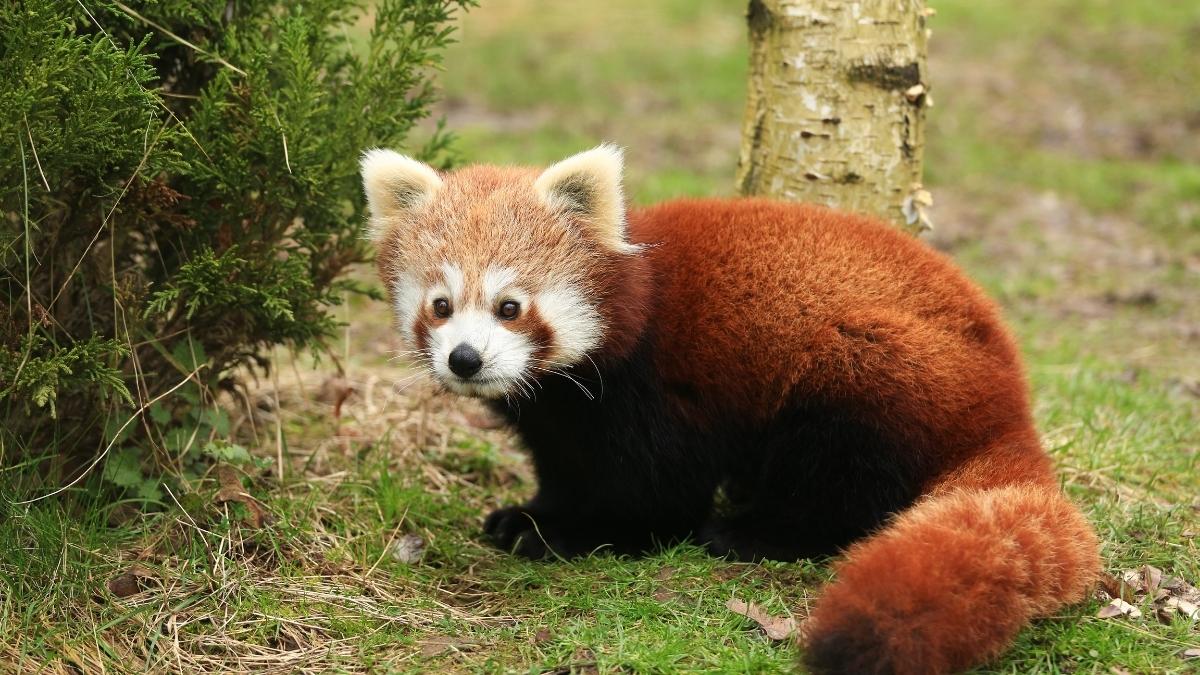Pandas have won over people all around with their elegant black-and-white coats, kind disposition, and lighthearted activities. From soft toys to animated movies, pandas typically portray themselves as charming, cuddly animals that everyone aspires to own. But is keeping a panda as a pet really feasible—or even wise?
Pandas make appealing pets; this is not a novel idea. For decades, they have been icons of friendship, peace, and environmentalism. Their quiet, apparently gentle demeanor makes them the ideal exotic pet. Actually, owning a panda is more of a fantasy than a reality. Pandas are wild animals with specific needs, making them unsuitable for household life.
This myth extends beyond pandas. Many individuals find immense appeal in keeping exotic creatures as pets, usually without fully considering the ramifications. Exotic dogs are unquestionably appealing, whether their originality, beauty, or media representation help to define them. But when it comes to pandas, the complexity goes well beyond first appeal.
Particularly for an animal like the panda, individuals enthralled with their beauty sometimes overlook the challenges of domestication. Let’s look at the reality of owning pandas and the reasons why, despite their attraction, they are better off in the wild.
Legalities of Keeping Pandas as Pets
Understanding the legal landscape helps one appreciate the practicality of panda ownership even before considering the expenses. International law codifies the protection of pandas, not just any wild animal.
CITES and International Protections
The Convention on International Trade in Endangered Species of Wild Fauna and Flora (CITES) protects pandas. 183 nations have signed this international agreement, which aims to ensure that the trade of wild animals and plants does not threaten their future. CITES includes pandas in Appendix I, a list of species that are considered at risk of extinction and receive the highest level of protection.
Therefore, it is not possible to exchange pandas abroad for profit. Scientific study, captive breeding projects, or conservation initiatives are the few deviations from this pattern. Breaking these rules has harsh consequences that can include incarceration and hefty fines. In other words, keeping a panda as a pet would be illegal, even if you could somehow get one.
National Laws and Exotic Pet Ownership
Apart from worldwide rules, most nations have their own laws controlling the ownership of exotic animals, including pandas. For instance, the Endangered Species Act (ESA) forbids importing, exporting, or possessing endangered species—including pandas—without a specific permission in the United States. Usually only approved for conservation or instructional use, these licenses are rather difficult to get.
Pandas are native to China, where the rules are considerably more stringent. The Chinese government owns all pandas, regardless of their loan to foreign zoos. Therefore, the Chinese government prohibits private ownership of pandas under all circumstances. These strict regulations aim to protect pandas from human exploitation and ensure their natural population remains stable.
Consequences of Illegal Panda Ownership
Illegal panda ownership has many more ramifications than one may think. Apart from the legal consequences, ethical issues abound as well. Pandas are under serious risk; habitat loss and climate change already greatly affect their numbers. Eliminating pandas from the wild or from conservation projects to retain them as pets just makes these problems more difficult.
Furthermore, illicit wildlife trading is a significant global issue that is leading to the extinction of many species. Those who engage in or assist this trade are directly endangering the very creatures they say they adore. Given their precarious situation in the natural world, pandas are particularly vulnerable.
The Challenges of Caring for a Panda
Even if one manages to successfully overcome the legal obstacles, raising a panda presents significant practical challenges. Unlike dogs or cats, pandas have rather particular demands that are challenging, if not impossible, to satisfy in a household environment.
Habitat Requirements
Pandas, native to the hilly regions of central China, live in cold, moist bamboo woods. Pandas find the perfect habitat in these woods, as they supply both food and cover required for their survival. Creating this ecosystem again in captivity is rather difficult.
Pandas require wide open areas with lots of bamboo, fresh water, and shade. Their cages have to be roomy enough to let them play, climb, and roam—natural activities for these species. In a normal house, offering these sorts of surroundings is just not possible. Pandas’ demands are difficult even for zoos, which have specialized facilities meant to replicate natural environments.
Dietary Needs
One of the most well-known pieces of information about pandas is their eating pattern; they consume a lot of bamboo. Actually, a panda’s diet consists of about 99% bamboo. An adult panda can consume up to forty pounds of bamboo per day. Anyone thinking about owning a panda will have little difficulty meeting this dietary need.
First, logistically, it is difficult to get enough bamboo to feed a panda. Many areas of the world lack bamboo; hence, importing it in the required amounts would be rather costly. Pandas are also known to be finicky eaters, frequently favoring one kind of bamboo over another. For most people, it would be challenging—if not impossible—ensuring a regular supply of their chosen bamboo species.
Apart from bamboo, pandas sometimes consume fruits and vegetables. However, these make up a very small portion of their diet and do not influence their consumption of bamboo. Generally, most pet owners cannot afford the expenses and complexities of feeding a panda.
Health Care and Maintenance
Maintaining the health of a panda presents yet another difficult task. Pandas are prone to several health concerns, including infections, digestive difficulties, and dental ones. They call for consistent veterinarian treatment from experts in exotic animals. Finding a veterinarian with the necessary knowledge to treat a panda can be difficult, and the cost of their care may be prohibitive.
In captivity, pandas also require enrichment activities to be both physically and psychologically active. Without these, individuals can get bored, unhappy, or even engage in destructive activities such as self-mutilation. Apart from their food and environmental needs, providing the required enrichment calls for full-time employment, which necessitates great expertise and resources.
Ethical Considerations: Should Pandas Be Kept as Pets?
In addition to the legal and practical concerns, the concept of owning pandas as pets raises significant ethical questions that require careful consideration. Pandas, as an endangered species, require special care and conservation because of their ecological importance.
Impact on Panda Populations
The International Union for Conservation of Nature (IUCN) now classifies pandas, with an estimated natural population of about 1,800, as threatened. Habitat loss, climate change, and human activity are the main threats to their survival. Eliminating pandas from the wild and housing them as pets would help to bring an already threatened species down.
Pandas, too, are significant in their natural environment. They help with seed distribution and encourage plant development as they traverse the forest, thereby supporting a variety of other animals. Eliminating pandas from their habitat might upset this natural process and have effects on the whole ecology.
Ethical Implications of Domestication
Domestication of wild creatures, such as pandas, raises important ethical questions. Wild animals have developed over millions of years to survive in certain habitats; so, putting them into household surroundings can lead to major stress and suffering. Pandas are particularly lonely creatures that require large areas to roam. Even with proper care, keeping them in small areas can cause psychological and physical damage.
Besides, the idea of keeping a wild animal as a pet is intrinsically controversial. It strips these amazing animals of their dignity and agency, transforming them from living entities to objects. We should respect pandas as wild creatures deserving of their native habitats, not as potential pets.
Alternatives to Keeping Pandas as Pets
Those who love pandas have plenty of ethical and responsible ways to interact with them. Excellent methods to help their well-being without supporting their exploitation are supporting conservation initiatives, visiting ethical zoos and sanctuaries, and assisting with panda adoption programs.
Why Pandas Are Better Off in the Wild
Pandas are not just famous species; they are also absolutely vital for their habitat. Pandas support the health of bamboo forests, which support a wide variety of other wild animals. Their foraging activity aids in the development of fresh bamboo shoots, thereby supporting a diverse spectrum of life.
The Role of Pandas in Their Ecosystem
Many species, including red pandas, golden monkeys, different birds, and insects, depend on bamboo forests for their existence. Pandas help to preserve these forests, thereby supporting the general health and biodiversity of their surroundings. Apart from endangering their numbers, removing pandas from the wild may upset the fragile equilibrium of their habitat.
The Importance of Conservation
Pandas’ numbers have changed dramatically over years, thanks in substantial part to conservation initiatives. Groups like the World Wildlife Fund (WWF) have greatly aided in protecting panda habitats, encouraging breeding initiatives, and understanding the difficulties these creatures encounter.
One of these initiatives’ primary achievements has been the establishment of panda reserves, which align with
Pandas may reside in protected regions in China, which are somewhat similar to their native environments. These areas provide opportunities for scientific research and breeding projects, in addition to helping pandas escape dangers such as habitat degradation and poaching.
Success Stories in Panda Conservation
Recently, conservation initiatives have stabilized the panda population, causing the species to shift from endangered to vulnerable. This is evidence of the success of well-coordinated conservation projects, as well as the need for global collaboration in protecting threatened species.
Still, the task is hardly finished. Pandas still suffer numerous difficulties, including continuous habitat loss and climate change. Because of ongoing support for conservation initiatives, pandas must be able to thrive in the wild for future generations.
What You Can Do to Help Pandas
If you love pandas, there are several ways you can contribute to their welfare without having one as a pet. You should do the following:
Support Panda Conservation Projects
Many companies worldwide are committed to protecting pandas and their habitats. Contributing to these groups or participating in their activities will help ensure that pandas continue to thrive in the wild. Certain companies even grant symbolic panda adoptions, whereby your donations actively support conservation initiatives.
Visit Ethical Zoos and Sanctuaries
See pandas up close by visiting a zoo or sanctuary that emphasizes animal welfare, conservation, and education. These facilities help to safeguard pandas and offer chances for learning about their natural behaviors.
Raise Awareness About Panda Conservation
Another approach to changing things is to educate others about the challenges pandas face and the importance of preservation. Through the use of social media, local events, or personal interactions, we can promote pandas conservation and create support for these initiatives.
Participate in Sustainable Practices
Deforestation and climate change-related habitat loss present one of the main hazards to pandas. Adopting sustainable activities in your own life—such as lowering your carbon footprint, buying environmentally friendly items, and championing environmental protection—you can help preserve the natural ecosystems pandas and other species depend on.
Conclusion
In essence, even if having a panda as a pet may be fascinating, the reality makes it abundantly evident that these animals are not fit for home life. Pandas are significantly better off in their native environments; the legal, logistical, and ethical issues are really great. Instead of trying to domesticate these amazing creatures, we should concentrate on supporting efforts at conservation that enable their natural survival.
Pandas are emblems of conservation; by honoring their presence in the wild, we help to support the more general endeavor to preserve the earth. Want to get involved? Discover ways to assist panda protection today and change the course of events for these amazing animals!





